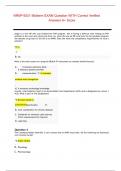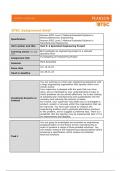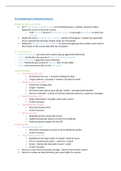Samenvatting
Strategy and Nonmarket Environment - summary articles & lectures
This summary includes all summaries of all the articles, book chapters and most important aspects of the lectures. Learned this summary within six days and scored a grade in the top 10%. Kranenburg & Voinea (2017) / Porter (1985) / Baron (1995) / Hu (1995) / Tallman & Cuervo-Cazurra (2021) / Dunni...
[Meer zien]













